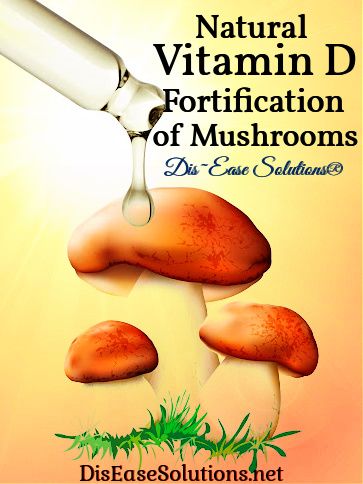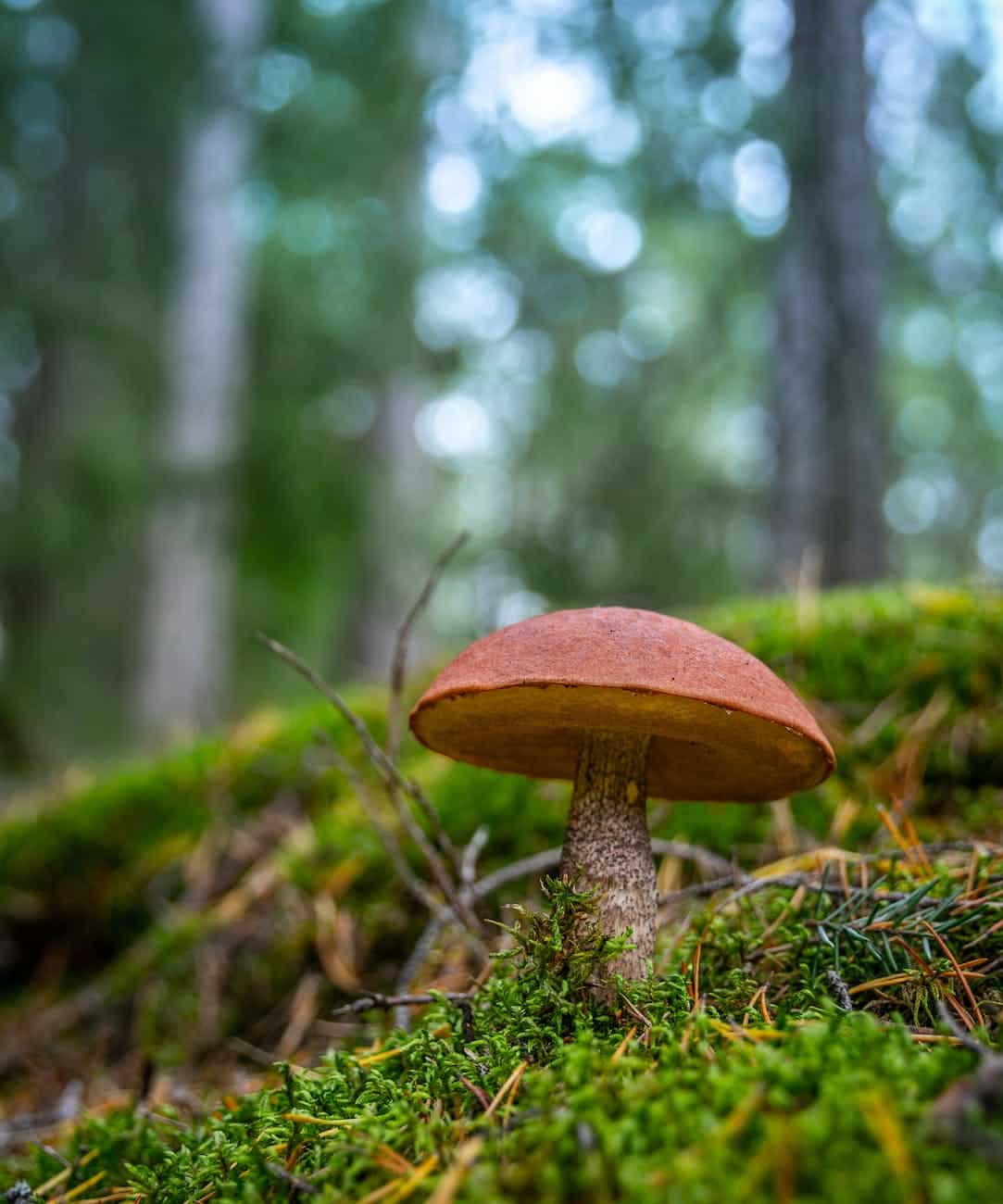Vitamin D is known as the “Sunshine Vitamin”. Ironically, at the same time diseases are at an epidemic high, vitamin D deficiency potentially affects 1 billion people world-wide. It is a game-changer that this issue may be resolved with a very simple process that involves exposing mushrooms to light, coaxing them to produce much more vitamin D! (1)

Plants do not contain vitamin D, as we can only obtain it from an animal source. (2) Mushrooms are in a classification of their own, although having commonalities with both plants and animals. Like animals, they require an external source of nutrition, similar to parasites, taking what they need from decomposing matter. Like animals they have no chlorophyll and have eukaryotic cells. (2) On the other hand, like plants, they convert sunlight into energy. Plants turn sunlight into chlorophyll, whereas mushrooms convert it into vitamin D. (2)
Current animal sources for vitamin D supplementation may cause many issues to arise. Livestock, dairy, eggs, and aquaculture animals may not have proper nutrition levels themselves. Many of these animals see little to no sunlight. They are fed synthetic nutrition, including hormones, and this too may affect the assimilation of vitamin D. Additionally, animal sources are not allowed for vegans and there are many that do not want to take synthetic variations of vitamin D supplementation. Lastly, even mushrooms that are farm-raised may have some of the same issues, as they are grown in the dark.
There is a magical conversion that happens when you expose mushrooms to UV light. Similar to how humans experience photochemical processes that product vitamin D. (3)
Using UV-A and UV-C lighting to boost the vitamin D content of mushrooms, ourselves, may be the answer that most are looking for! Surprisingly, this even works on them if they are sliced, powdered, and even dried. There are factors that determine the conversion such as species, parts of the mushroom used, surface area exposed, UV intensity, wavelength, and the moisture content.
The biggest game changer of all is to use this process on a tincture, which is suspended compounds in alcohol. It may not only avoid degradation but, with then applying the UV light, research has shown that the vitamin D content may be boosted to over 4,500%! This may be a game-changer!
We are offering to bathe your mushroom, or other products in UV light for 3 hours! Simply purchase your product as normal. Then you go to the UV Light Bath page, to purchase the bath itself separately. To be redirected to the UV Light Bath™ Product Page, Click Here!
- Purchase any fresh or dried mushrooms – the study used button, shiitake, and oyster mushrooms.
- Purchase a UV lamp that emits UV-A, and UV-C rays. A combination of UV-A and UV-C was found to be more effective at raising Vitamin D2 than UV-B. (4)
- Place the mushrooms on a tray and slice them.
- For 60 minutes, expose sliced mushrooms to UV-B light.
- Take advantage of your free vitamin D2!
Not only is this process said to work on mushrooms and vitamin D content, but also on many types of vitamins and nutrients, including chlorophyll. While the focus here is on the vitamin D content of mushrooms, you may want to do your own research on the effects of using UV lighting to sterilize, enhance, and to grow your plants. There are many studies involving manipulating the growth, photosynthesis, chlorophyll, and nutrition content of your plants! (5)
References:
- Blasting mushrooms with UV light boosts vitamin D by 4,600% – Big Think
- https://doi.org/10.1111/ijfs.15410
- Ultraviolet Irradiation Increased the Concentration of Vitamin D2 and Decreased the Concentration of Ergosterol in Shiitake Mushroom (Lentinus edodes) and Oyster Mushroom (Pleurotus ostreatus) Powder in Ethanol Suspension | ACS Omega
- Do plants grow better in UV light? | Hoe and Rake
- Benefits of UV Application on Fresh Produce | Alpha-Purify

